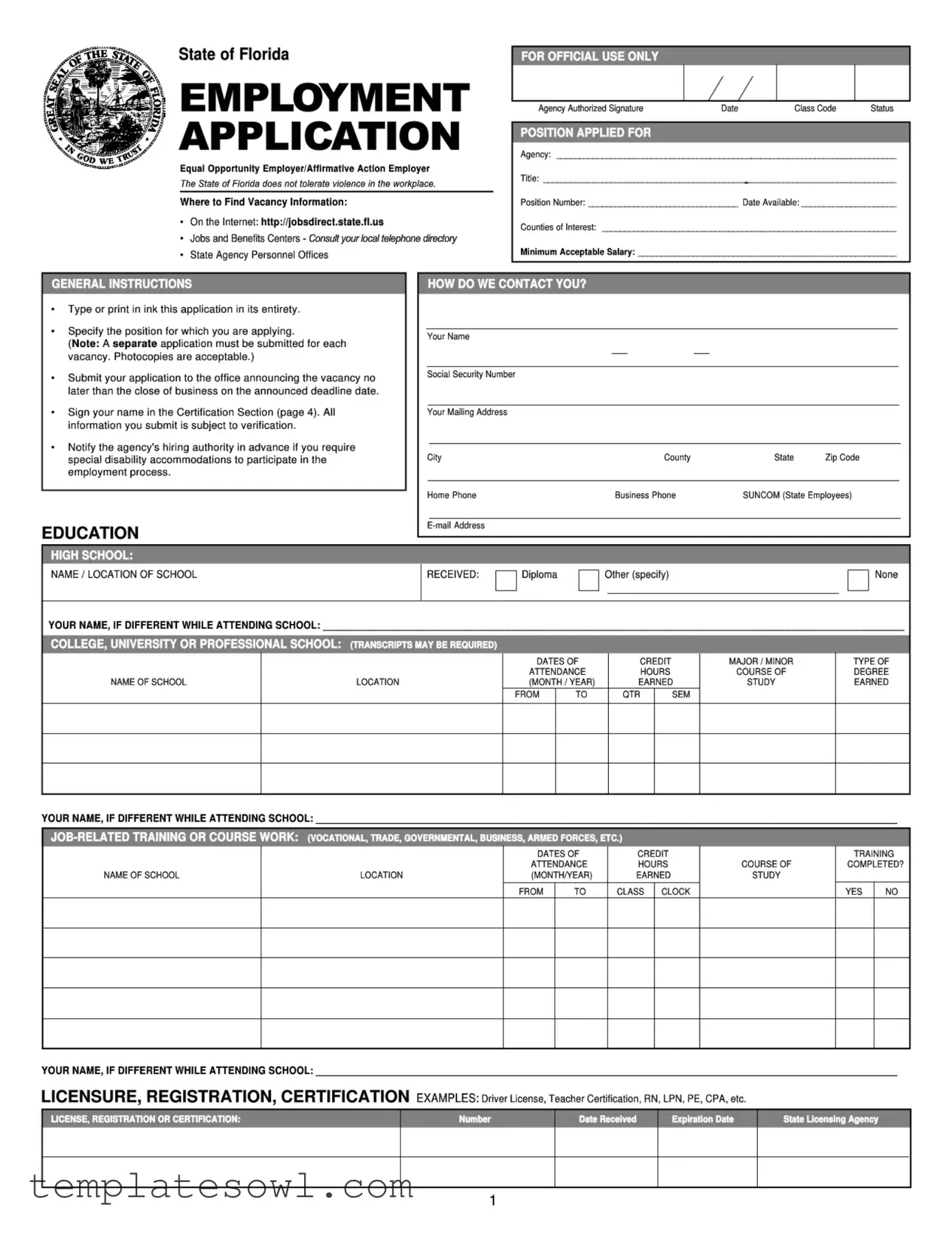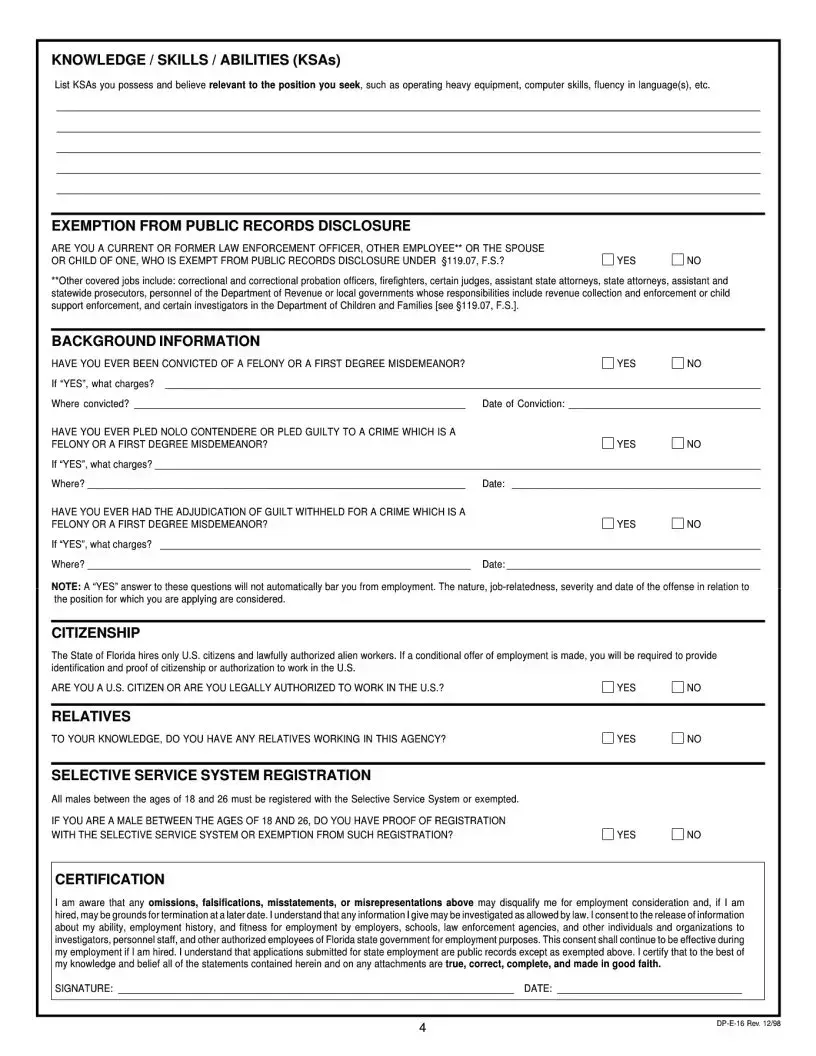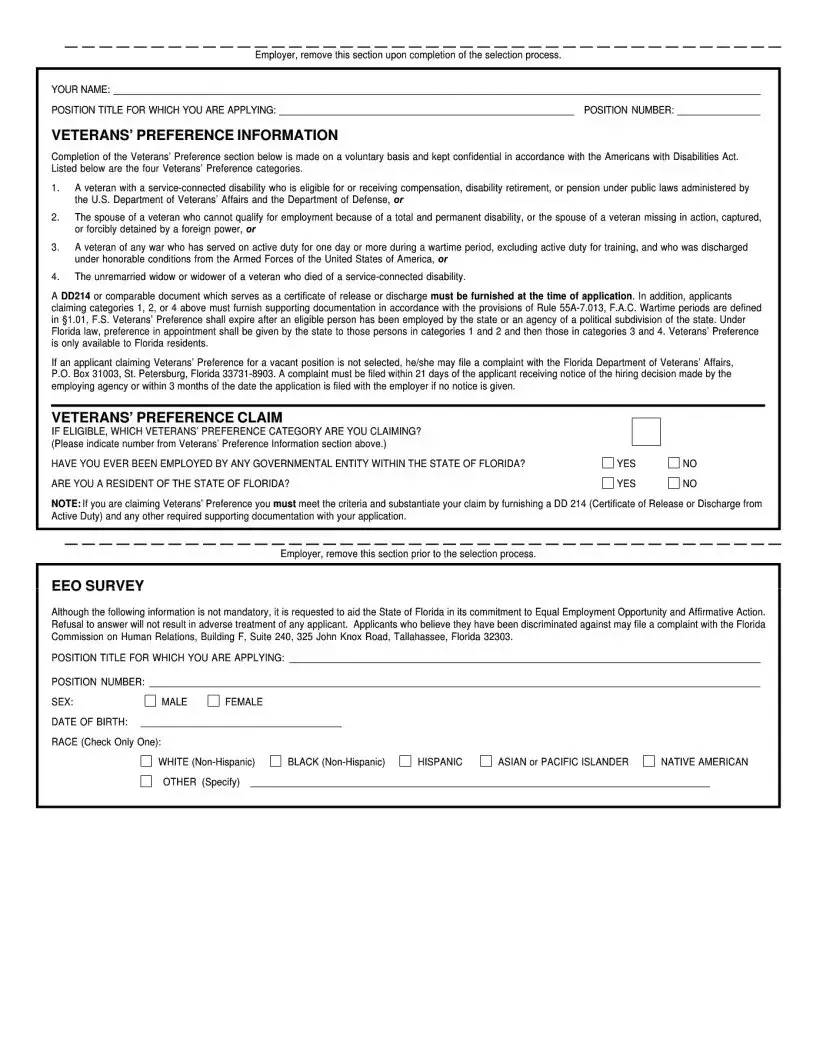What is the purpose of the Florida Employment Application form?
The Florida Employment Application form is designed to gather essential information from individuals seeking employment within state agencies. It ensures that applicants provide a standardized set of details, making it easier for hiring managers to evaluate qualifications and experience. By using this form, applicants help state agencies maintain a fair and efficient hiring process.
How should I fill out the application form?
When filling out the application, you should type or print neatly using ink. Make sure to specify the position you are applying for, as each vacancy requires a separate application. Remember to complete all required sections, including your personal details, educational background, work experience, and any relevant training. Verify that you sign the Certification Section on the last page, as your signature confirms the accuracy of the information provided.
Can I submit a resume along with my application?
Yes, you can attach a resume to your application to provide additional information about your qualifications and work experience. However, it’s important to note that all required sections of the application must be completed. The resume should complement the application rather than serve as a substitute.
How do I know if my application has been received?
Once you submit your application to the appropriate agency, it’s recommended to follow up with them to confirm receipt. You can contact the agency's personnel office directly, using the phone number listed in the vacancy announcement. This proactive approach ensures that your application is in their hands and being reviewed.
Are there any deadlines for submitting the application?
Yes, each job posting will specify a deadline by which applications must be received. It's crucial to submit your application by the close of business on that date to ensure consideration for the position. Check the job announcement carefully for the exact deadline details.
What if I need accommodations during the application process?
If you require special accommodations due to a disability, it's important to notify the agency’s hiring authority in advance. This allows the agency to make the necessary arrangements to assist you throughout the application and interview process.
What information do I need to provide about my employment history?
You need to provide detailed information about your work history, starting with your most recent position. This includes the name of the employer, job title, dates of employment, hours worked per week, duties and responsibilities, and the reason for leaving. You should include any relevant military service and volunteer work, as well. Each position should be detailed in a separate block to ensure clarity.
Is there a specific format for providing my education and training details?
Yes, the application outlines a specific format for documenting your education and training. You will need to include the name and location of each school attended, the credentials received, and relevant coursework. Make sure to list vocational or trade courses as well, along with the dates of attendance and any certifications earned. This ensures that your educational background is clearly presented.






